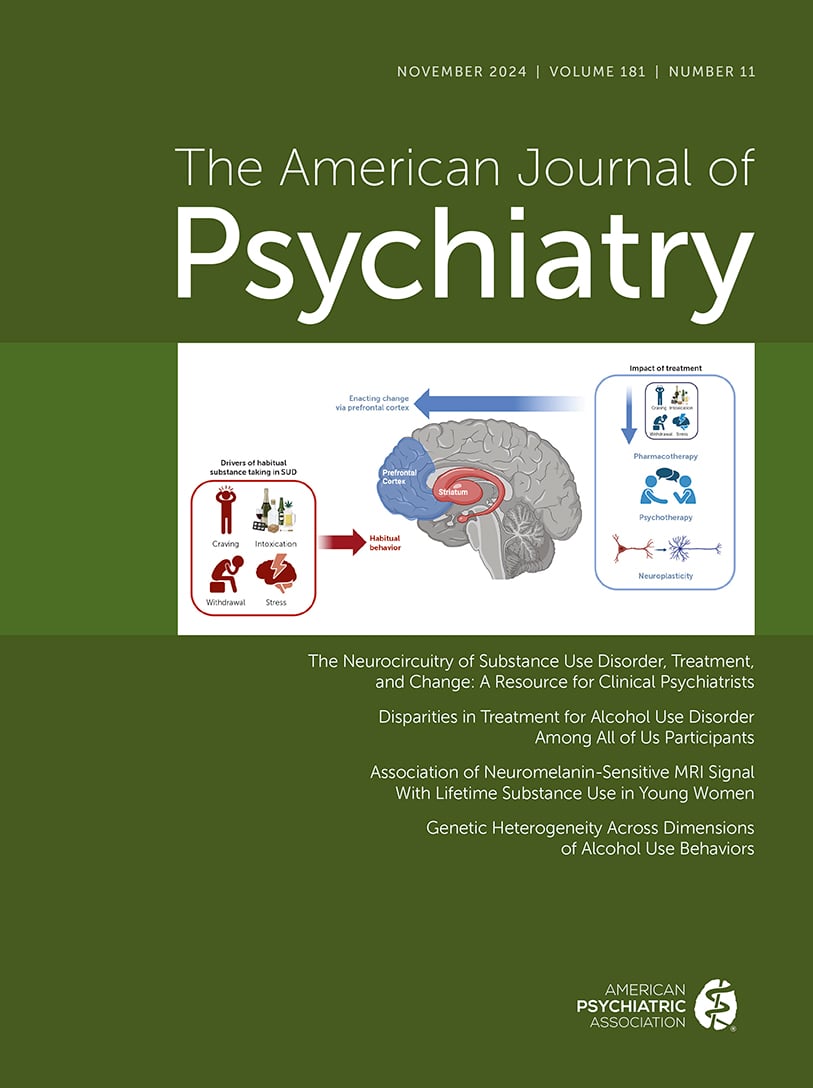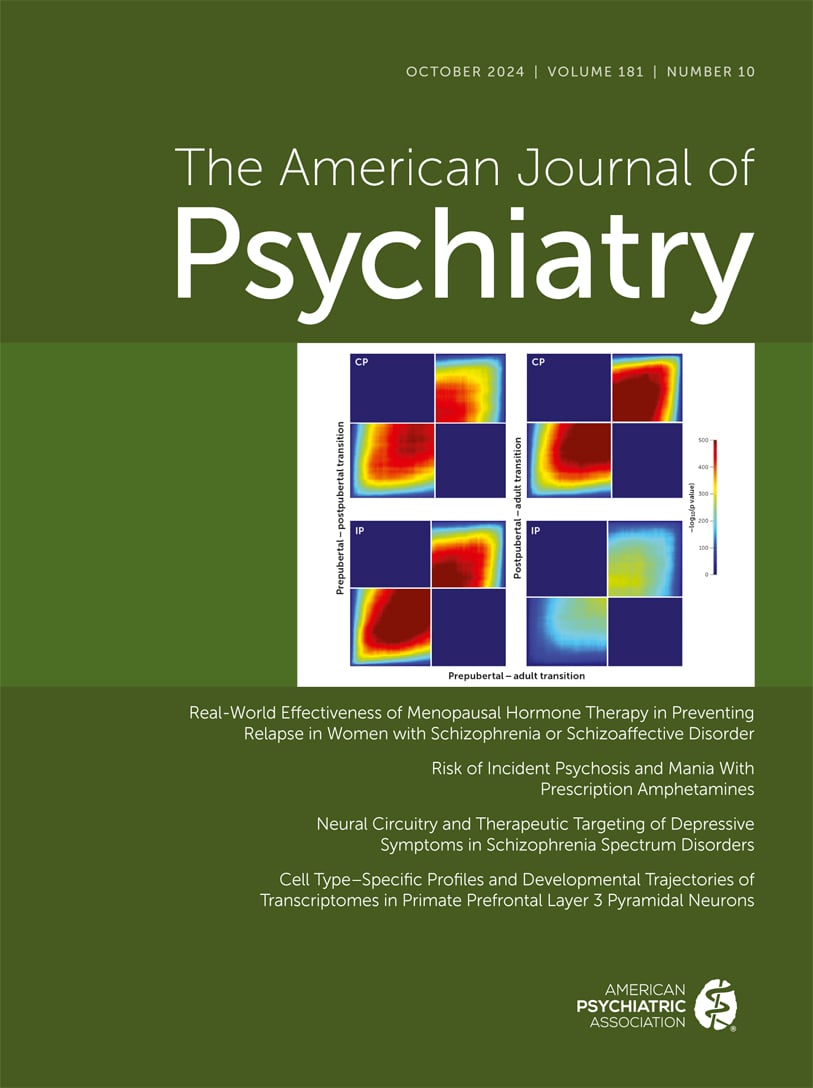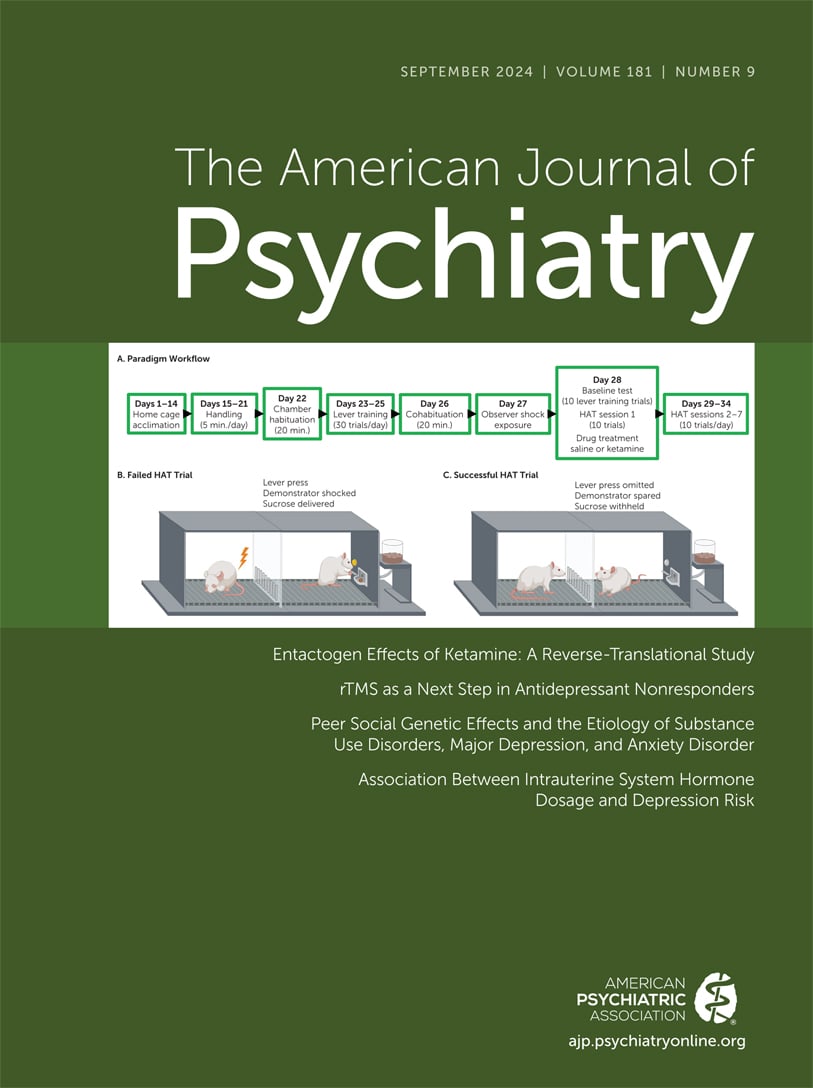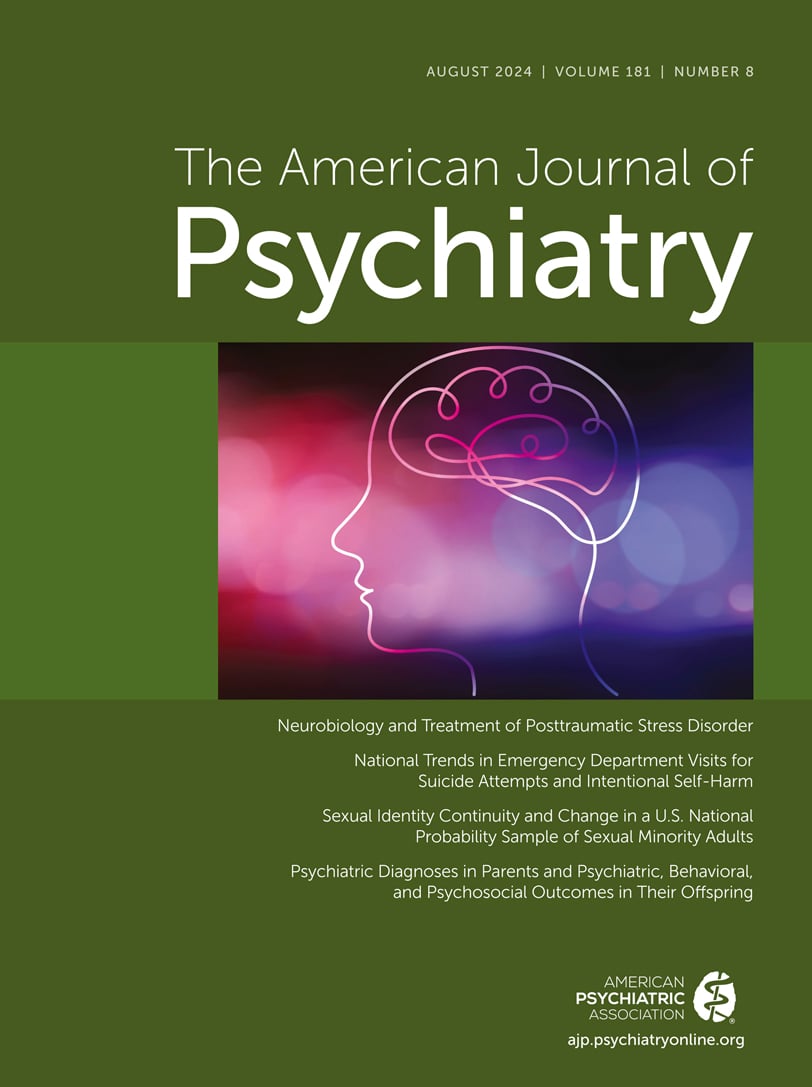American Journal of Psychiatry
- Volume 102
- Number 2
- September 1945
Article
Publication date: 01 September 1945
Pages145–1631. A series of 125 late post-traumatic syndromes have been compared to 70 cases with acute head injuries, 30 cases with brain disease, and 40 psychoneuroses. The methods of investigation comprised: complete neurological, psychiatric, ...
https://doi.org/10.1176/ajp.102.2.145Publication date: 01 September 1945
Pages164–167Observations have been made on some aspects of the geographical distribution of manic-depressive and involutional melancholic psychoses, and suggestions have been offered as to the possible presence of genetic factors in the etiology of these psychoses.
https://doi.org/10.1176/ajp.102.2.164Publication date: 01 September 1945
Pages168–173Studying all first admissions of patients over 65 years old to the state mental hospitals in Maryland, during 1938, 1939 and 1940, we found: (A) The group 65-69 years old was larger than the other groups; 65-69, 30%; 70-74, 26%, 75-79, 21%; 8o up, 23%. (B)...
https://doi.org/10.1176/ajp.102.2.168Publication date: 01 September 1945
Pages174–180Fifteen individual memory tests and one intelligence test were given to sixty male neurotic army patients at Mill Hill and Sutton Emergency Hospitals. The scores on these 16 tests were intercorrelated, and the resulting table factor-analyzed. The ...
https://doi.org/10.1176/ajp.102.2.174Publication date: 01 September 1945
Pages181–1831. It is submitted that a high F score in the M. M. P. I. is only very rarely an invalidating factor in the consideration of abnormal subjects. Generally it indicates the presence of significant and often severe psychiatric disease. 2. More controlled ...
https://doi.org/10.1176/ajp.102.2.181Publication date: 01 September 1945
Pages184–190Blood was drawn simultaneously from an artery and the two internal jugular veins in 25 subjects. The oxygen A-V difference was approximately the same on the two sides, except in 4 patients with psychosis, and in 4 epileptics with left-sided cerebral ...
https://doi.org/10.1176/ajp.102.2.184Publication date: 01 September 1945
Pages191–197Presenile dementia does not appear to be a well-defined clinico-anatomical entity, and single case studies are helpful in elucidating the problem of pathogenesis and classification. Two cases of presenile dementia are described. One is that of a man who, ...
https://doi.org/10.1176/ajp.102.2.191Publication date: 01 September 1945
Pages202–2041. Marihuana does not produce addiction in the sense that opium and its derivatives do. Tolerance is not established and withdrawal symptoms do not occur. It is an intoxicant which temporarily produces euphona, distortion of time perception and impairment ...
https://doi.org/10.1176/ajp.102.2.202Publication date: 01 September 1945
Pages205–2131. A series of 325 neuropsychiatric disorders studied at an Aleutian post is presented and discussed from the standpoint of etiology, incidence, reaction types and treatment. 2. Though combat was not a factor in precipitating or reactivating neurotic ...
https://doi.org/10.1176/ajp.102.2.205Publication date: 01 September 1945
Pages214–2211. A comparative study of 100 neuropsychiatric combat casualties and of 100 control cases is reported. 2. There was a slight preponderance of older men in the neurosis group. 3. The incidence of poor family background and early environment was about twice ...
https://doi.org/10.1176/ajp.102.2.214Publication date: 01 September 1945
Pages222–230The severe life-long neurotic continues to be a problem in the army setting. Failure to detect the nature of his illness which often expresses itself early in basic training results in many useless hospital day and weeks lost in specialized training ...
https://doi.org/10.1176/ajp.102.2.222Publication date: 01 September 1945
Pages231–2361. Nine-hundred and sixty-eight cases admitted to an army neurosis center are analyzed according to certain sociological factors. The age distribution of cases is given. 2. Normal homes produce a significantly smaller proportion of military delinquents ...
https://doi.org/10.1176/ajp.102.2.231Publication date: 01 September 1945
Pages237–2401. The incidence of post-traumatic neuroses varies considerably since the development of psychogenic disturbance depends upon emotional factors related to the accident. Terrifying events, such as the Cocoanut Grove fire disaster, have a higher incidence ...
https://doi.org/10.1176/ajp.102.2.237Publication date: 01 September 1945
Pages241–244A consecutive series of white naval recruits, consisting of 6946 men ranging in age from 17 through 37, was interrogated about and observed for the nail-biting mannerism. Of this group, tallies were kept for 4649 men in order to determine age-frequency ...
https://doi.org/10.1176/ajp.102.2.241Publication date: 01 September 1945
Pages245–256On admission to the sick list, 3 brothers presented the picture of an anxiety reaction. Their symptoms were similar, but varied in intensity. The opportunity to observe a reaction so common in wartime in individuals with very much the same protoplasmic ...
https://doi.org/10.1176/ajp.102.2.245Publication date: 01 September 1945
Pages260–262Statistical data on 89 non-resident white women, civil service employees have been presented with the inference that these psychotic workers present a universal problem in industrial medicine that may be expected to become more acute with rising ...
https://doi.org/10.1176/ajp.102.2.260Past Issues
View Issues Archive
Vol. 181 | No. 11

Vol. 181 | No. 10

Vol. 181 | No. 9
